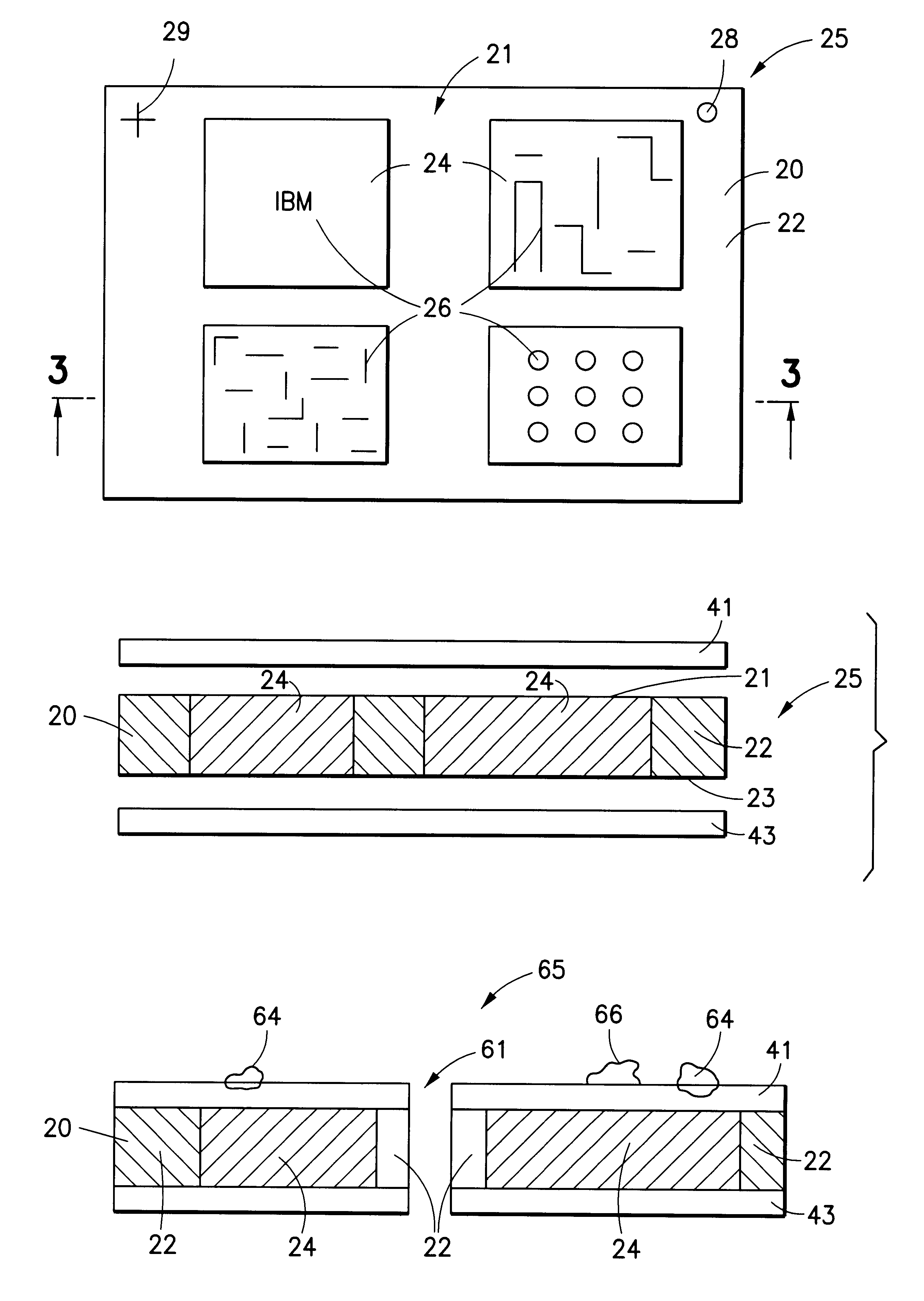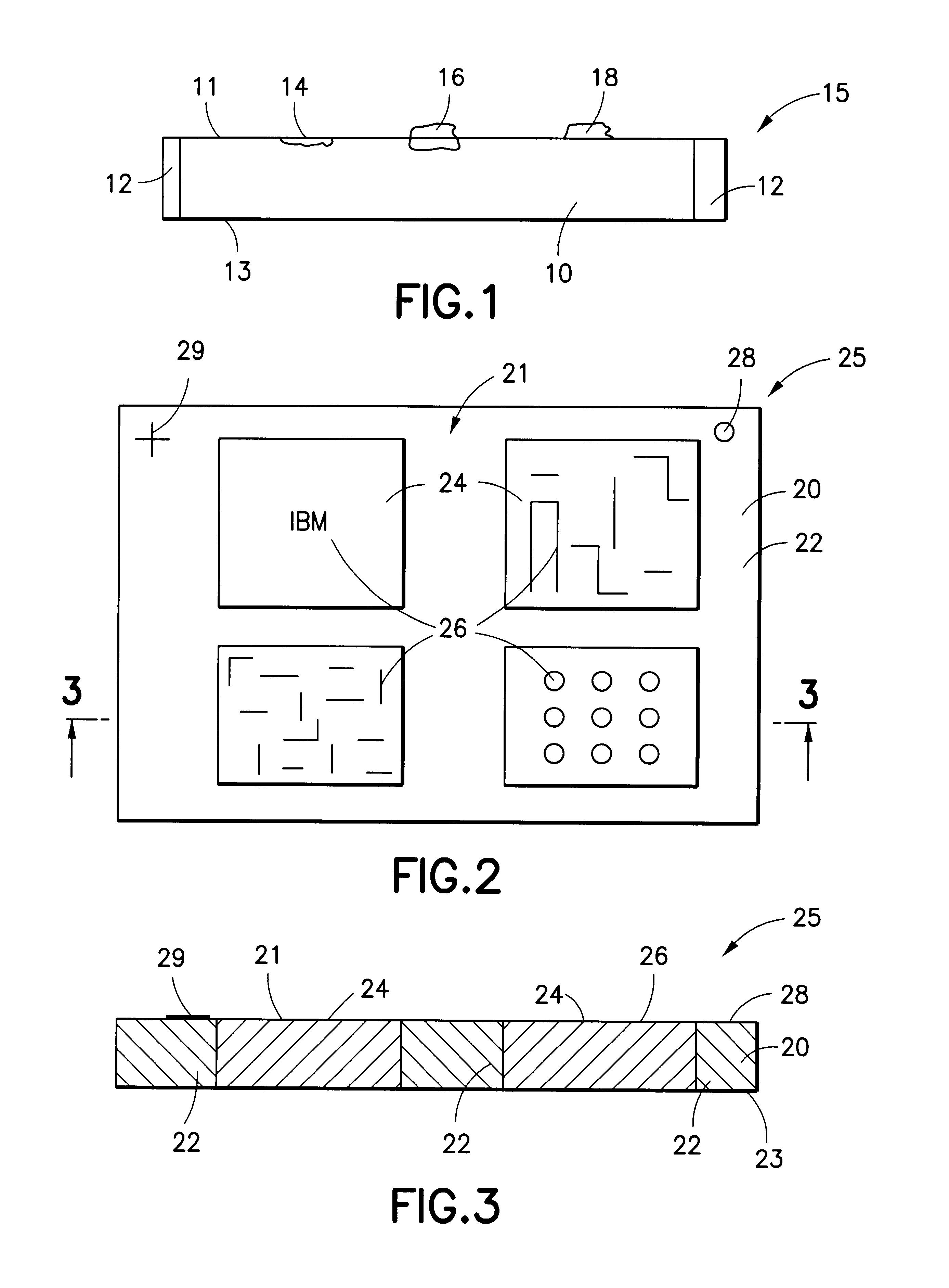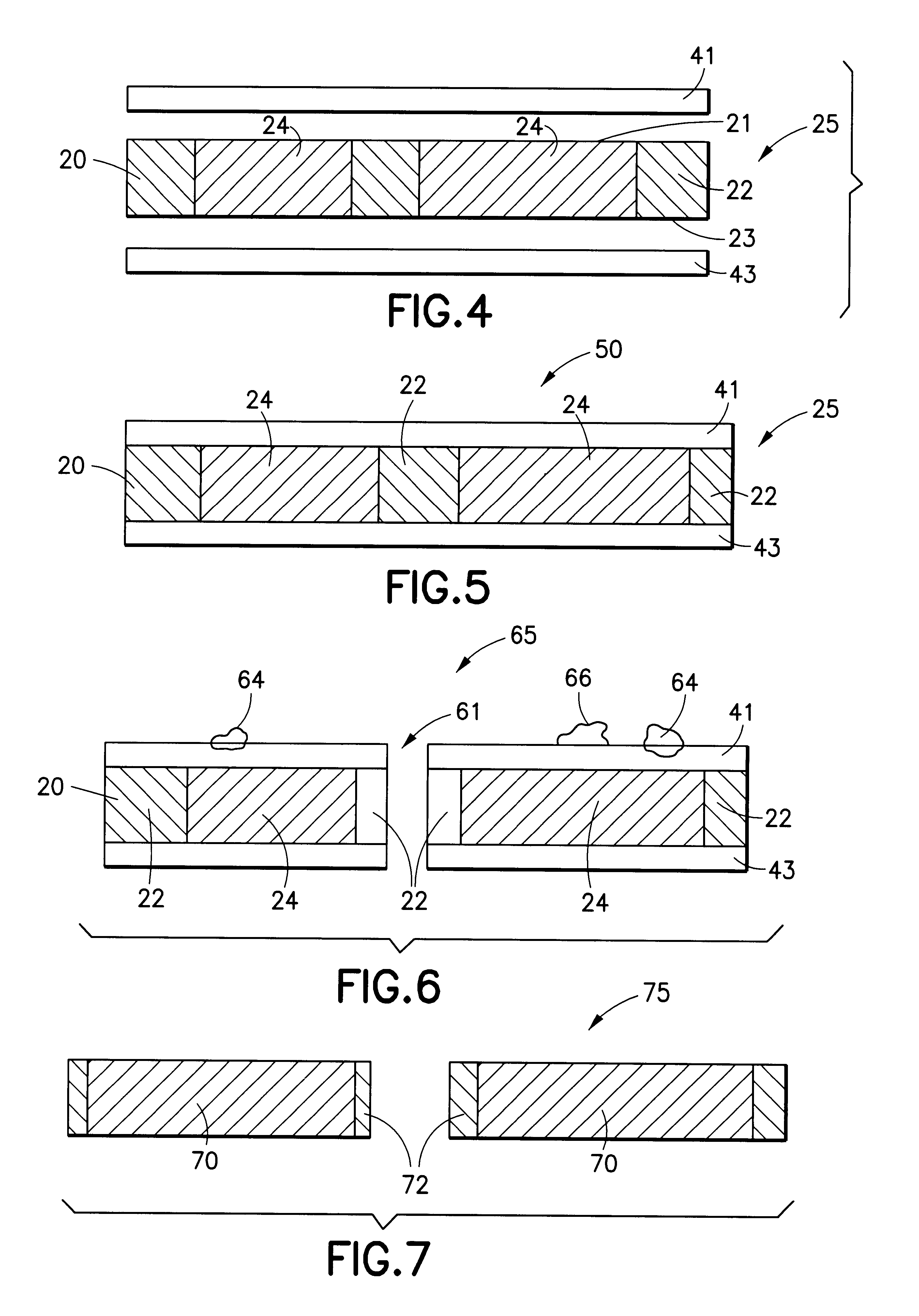Method of forming defect-free ceramic structures using thermally depolymerizable surface layer
- Summary
- Abstract
- Description
- Claims
- Application Information
AI Technical Summary
Benefits of technology
Problems solved by technology
Method used
Image
Examples
example 1
Several samples of the multilayer ceramic structures having defect-free surface metallurgical features were fabricated using the process of this invention.
In one sample a stack containing metallized ceramic layers 24, was placed in a lamination frame (not shown). A polyacrylate based thermoplastic adhesive film QL3500 having thickness of about 1-2 mil, was then placed over the top and bottom surface of the stack. The protective adhesive thermoplastic film 41 and / or 43, which had a thickness of about 1-2 mil, was obtained from DuPont and was found to have an elongation of about 200 percent at room temperature.
This assembly was then placed inside a 3 mil thick polyurethane bag (durometer 30 shore A), evacuated and heat sealed. The polyurethane bag, was obtained from Stevens Urethane Film & Sheet, Northampton, Mass., USA. The bag, with its contents were then laminated under pressure to about 5000 psi and at a temperature to about 90.degree. C. in an isostatic press.
After the lamination...
example 2
In another set of samples the assembly of ceramic layers stack 25, was laminated in a manner described in Example 1, but no thermally depolymerizable surface layer was used. These samples had embedded surface debris and bonded green sizing debris and showed severe paste and ceramic pull by the bag material and also by the lamination plate. This demonstrated the need for the sacrificial protective interface layer 41 and / or 43, and the process of this invention.
example 3
In another series of samples, different type of polyacrylate based thermally decomposable surface films, LF0100 and LF0200 films of 1-2 mil thickness, commercially available from DuPont as a family of Pyralux products were used. Basically, the assembly of metallized ceramic layers were stacked and placed in the lamination frame, as described in Example 1.
Other polyacrylates derived thermally depolymerizable / decomposable films tried were made of homopolymers, co-polymers, terpolymers, or physical mixtures thereof, of derived from acrylic monomers. The desired characteristics of these decomposable thermoplastic films include a thickness in the range of about 1 mil to about 5 mils and elongation varying between 150 percent to about 550 percent, with elastic modulus being about 0.3 GPa.
The rest of the assembly and the procedure followed was similar to the one explained in Example 1. Again, there was no evidence of fused debris on the metallurgical features and no paste pull-outs was se...
PUM
| Property | Measurement | Unit |
|---|---|---|
| Pressure | aaaaa | aaaaa |
| Angle | aaaaa | aaaaa |
| Elongation | aaaaa | aaaaa |
Abstract
Description
Claims
Application Information
 Login to View More
Login to View More - R&D
- Intellectual Property
- Life Sciences
- Materials
- Tech Scout
- Unparalleled Data Quality
- Higher Quality Content
- 60% Fewer Hallucinations
Browse by: Latest US Patents, China's latest patents, Technical Efficacy Thesaurus, Application Domain, Technology Topic, Popular Technical Reports.
© 2025 PatSnap. All rights reserved.Legal|Privacy policy|Modern Slavery Act Transparency Statement|Sitemap|About US| Contact US: help@patsnap.com



